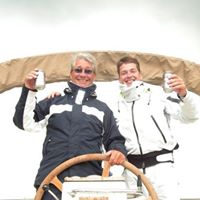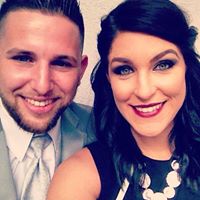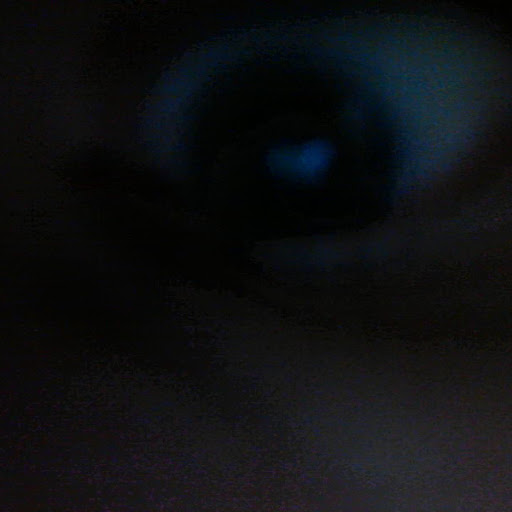Steven K Wolff
age ~37
from Parlin, NJ
- Also known as:
-
- Steve K Wolff
- Steven Wolf
Steven Wolff Phones & Addresses
- Parlin, NJ
- Wellington, FL
- 476 Lord St, Avenel, NJ 07001 • (732)6343518
Work
-
Company:Lenox Hill Hospital Radiology
-
Address:100 E 77Th St, New York, NY 10075
-
Phones:(212)4342910
Education
-
School / High School:Duke University School Of Medicine1989
Languages
English • Burmese • Russian • Spanish
Specialities
Diagnostic Radiology
Lawyers & Attorneys

Steven Harlan Wolff, Clifton NJ - Lawyer
view sourceAddress:
The Law Office of Steven H. Wolff, LLC.
1111 Clifton Avenue Suite 201, Clifton, NJ 07013
(973)6857160 (Office), (973)4588138 (Fax)
1111 Clifton Avenue Suite 201, Clifton, NJ 07013
(973)6857160 (Office), (973)4588138 (Fax)
Licenses:
New Jersey - Active 2006
New York - Due to reregister within 30 days of birthday 2007
New York - Due to reregister within 30 days of birthday 2007
Experience:
Managing Partner at Law Office of Steven H. Wolff, LLC - 2010-present
Education:
New York Law School
Degree - JD - Juris Doctor - Law
Graduated - 2005
Degree - JD - Juris Doctor - Law
Graduated - 2005
Specialties:
Family - 50%, years
Criminal Defense - 25%, years
Personal Injury - 10%, years
DUI / DWI - 10%, years
General Practice - 5%, years
Criminal Defense - 25%, years
Personal Injury - 10%, years
DUI / DWI - 10%, years
General Practice - 5%, years
Languages:
English
Associations:
Bergen County Bar Association, 2012-present
Morris County Bar Association, 2012-present
North Jersey Chamber of Commerce, 2011-present
Passaic County Bar Association, 2011-present
Morris County Bar Association, 2012-present
North Jersey Chamber of Commerce, 2011-present
Passaic County Bar Association, 2011-present
Description:
My passion is the practice of law. I love to work with my clients and see the satisfaction in their faces after we have obtained justice on their behalf....

Steven Charles Wolff - Lawyer
view sourceLicenses:
Virginia - Authorized to practice law 1988

Steven Harlan Wolff, Morristown NJ - Lawyer
view sourceAddress:
Steven H. Wolff, LLC
4 Arbor Way, Morristown, NJ 07960
(973)6857160 (Office)
4 Arbor Way, Morristown, NJ 07960
(973)6857160 (Office)
Licenses:
New Jersey - Active 2006

Steven Wolff - Lawyer
view sourceOffice:
Rosenfeld Wolff and Klein
Specialties:
Real Estate Law
Partnership Law
Real Property Law
Partnership Law
Real Property Law
ISLN:
902654073
Admitted:
1981
University:
University of California at Los Angeles, B.A., 1978
Law School:
Boalt Hall School of Law, University of California, J.D., 1981
License Records
Steven W. Wolff
License #:
16468 - Expired
Issued Date:
Jan 24, 1996
Renew Date:
Jun 1, 2006
Expiration Date:
May 31, 2008
Type:
Certified Public Accountant
Steven Wolff
License #:
33711 - Expired
Category:
Dual Towing Operator(IM)/VSF Employee
Expiration Date:
Feb 10, 2016
Steven Noel Wolff
License #:
10403 - Expired
Category:
Pharmacy
Issued Date:
Jul 27, 1990
Effective Date:
Jan 2, 1996
Type:
Pharmacist
Medicine Doctors

Dr. Steven D Wolff, New York NY - MD (Doctor of Medicine)
view sourceSpecialties:
Diagnostic Radiology
Address:
Lenox Hill Hospital Radiology
100 E 77Th St, New York, NY 10075
(212)4342910 (Phone)
62 E 88Th St, New York, NY 10128
(212)3699200 (Phone), (212)3695048 (Fax)
100 E 77Th St, New York, NY 10075
(212)4342910 (Phone)
62 E 88Th St, New York, NY 10128
(212)3699200 (Phone), (212)3695048 (Fax)
Languages:
English
Burmese
Russian
Spanish
Burmese
Russian
Spanish
Hospitals:
Lenox Hill Hospital Radiology
100 E 77Th St, New York, NY 10075
62 E 88Th St, New York, NY 10128
Lenox Hill Hospital
100 East 77Th Street, New York, NY 10075
100 E 77Th St, New York, NY 10075
62 E 88Th St, New York, NY 10128
Lenox Hill Hospital
100 East 77Th Street, New York, NY 10075
Education:
Medical School
Duke University School Of Medicine
Graduated: 1989
Medical School
Johns Hopkins University School Med
Graduated: 1989
Medical School
Yale College
Graduated: 1984
Duke University School Of Medicine
Graduated: 1989
Medical School
Johns Hopkins University School Med
Graduated: 1989
Medical School
Yale College
Graduated: 1984

Steven M. Wolff
view sourceSpecialties:
Urology
Work:
Health First Medical Group Urology
1026 Pathfinder Way, Rockledge, FL 32955
(321)6312070 (phone), (321)6316489 (fax)
Health First Medical Group Urology
701 W Cocoa Bch Cswy STE 602, Cocoa Beach, FL 32931
(321)6312070 (phone), (321)6316489 (fax)
1026 Pathfinder Way, Rockledge, FL 32955
(321)6312070 (phone), (321)6316489 (fax)
Health First Medical Group Urology
701 W Cocoa Bch Cswy STE 602, Cocoa Beach, FL 32931
(321)6312070 (phone), (321)6316489 (fax)
Education:
Medical School
Creighton University School of Medicine
Graduated: 1990
Creighton University School of Medicine
Graduated: 1990
Procedures:
Circumcision
Cystourethroscopy
Transurethral Resection of Prostate
Cystoscopy
Kidney Stone Lithotripsy
Prostate Biopsy
Cystourethroscopy
Transurethral Resection of Prostate
Cystoscopy
Kidney Stone Lithotripsy
Prostate Biopsy
Conditions:
Benign Prostatic Hypertrophy
Bladder Cancer
Calculus of the Urinary System
Erectile Dysfunction (ED)
Prostate Cancer
Bladder Cancer
Calculus of the Urinary System
Erectile Dysfunction (ED)
Prostate Cancer
Languages:
English
Spanish
Spanish
Description:
Dr. Wolff graduated from the Creighton University School of Medicine in 1990. He works in Cocoa Beach, FL and 1 other location and specializes in Urology. Dr. Wolff is affiliated with Cape Canaveral Hospital and Viera Hospital.

Steven N Wolff
view sourceSpecialties:
Internal Medicine
Medical Oncology
Hematology & Oncology
Public Health & General Preventive Medicine
Medical Oncology
Hematology & Oncology
Public Health & General Preventive Medicine
Education:
University of Illinois at Chicago (1974)

Steven Dana Wolff
view sourceSpecialties:
Radiology
Diagnostic Radiology
Diagnostic Roentgenology
Endocrinology, Diabetes & Metabolism
Diagnostic Radiology
Diagnostic Roentgenology
Endocrinology, Diabetes & Metabolism
Education:
Duke University(1989)

Steven Dana Wolff
view sourceSpecialties:
Diagnostic Radiology
Endocrinology, Diabetes & Metabolism
Endocrinology, Diabetes & Metabolism
Education:
Duke University(1989)
Name / Title
Company / Classification
Phones & Addresses
Owner
The Law Office of Steven H Wolff LLC
Legal Services Office
Legal Services Office
4 Arbor Way, Morristown, NJ 07960
Mdphd, Medical Doctor, Owner, Principal
East Side Medical Radiology
Health/Allied Services
Health/Allied Services
62 E 88 St, New York, NY 10128
WOLFFTECH LLC
MCC GROUP LLC
Wolffman's Home Improvement Inc
Ceramic Tile · Flooring · Glass Block · Hardwood Floor Repair · Interior Painters · Plumbing · Remodeling · Bathroom & Kitchen Remodeling
Ceramic Tile · Flooring · Glass Block · Hardwood Floor Repair · Interior Painters · Plumbing · Remodeling · Bathroom & Kitchen Remodeling
1646 Stadium Ave, Bronx, NY 10465
(914)4693517
(914)4693517
GEWOCO LLC
Steven Wolff MD
Radiology
Radiology
170 E 77 St, New York, NY 10075
(212)3699200
(212)3699200
Technical Director
Solomon Page Group
Staffing and Recruiting · Temporary Staffing · Temporary Employment · Employment Agencies · Executive Search Services
Staffing and Recruiting · Temporary Staffing · Temporary Employment · Employment Agencies · Executive Search Services
260 Madison Ave, New York, NY 10016
260 Madison Ave 3 Fl, New York, NY 10016
300 Spg BUILDING , SUITE 900 300 S SPRING STREET, Little Rock, AR 72201
7676 Hazard Ctr Dr, San Diego, CA 92108
(619)2912300, (212)4036100
260 Madison Ave 3 Fl, New York, NY 10016
300 Spg BUILDING , SUITE 900 300 S SPRING STREET, Little Rock, AR 72201
7676 Hazard Ctr Dr, San Diego, CA 92108
(619)2912300, (212)4036100
Isbn (Books And Publications)

Resumes

Steven Wolff
view source
Steven Wolff
view source
Steven Wolff
view source
Steven Wolff
view source
Owner At Radiology Consultant
view sourceLocation:
Greater New York City Area
Industry:
Medical Practice
Us Patents
-
Cap For Dispensing Viscous Liquids
view source -
US Patent:6412664, Jul 2, 2002
-
Filed:Aug 17, 2000
-
Appl. No.:09/640455
-
Inventors:Floyd Wolff - Boca Raton FL 33496
Steven Wolff - New York NY 10021 -
International Classification:B65D 3700
-
US Classification:222211, 2224641, 222564, 222547, 222556, 220259, 220837, 215235
-
Abstract:A cap for use in dispensing viscous liquids from containers without the accompaniment of lower viscosity liquid present in the container. The cap has a top portion with an outside surface and an inside surface and an elongated conduit formed at a pre-determined angle. The elongated conduit has an outlet and an inlet. The outlet is situated either eccentrically or concentrically on the outside surface of the top portion such that at least one point on the circumference of the top portion is greater than 10 millimeters from the edge of the inlet.
-
Apparatus And Method For Improving Diagnoses
view source -
US Patent:6577887, Jun 10, 2003
-
Filed:Mar 13, 2001
-
Appl. No.:09/804938
-
Inventors:Floyd Wolff - Boca Raton FL 33496
Steven Wolff - New York NY 10021 -
International Classification:A61B 505
-
US Classification:600411, 600420, 600422
-
Abstract:The apparatus and method alters the intravenous delivery of pharmaceuticals to enhance imaging of the vasculature of an animal. The apparatus includes a pressure-inducing component that is sized to attach circumferentially to an extremity of an animal thereby impeding arterial blood flow causing said pharmaceuticals to remain at selected levels within the vasculature.
-
Method And Apparatus For Mr Perfusion Image Acquisition Using A Notched Rf Saturation Pulse
view source -
US Patent:6618605, Sep 9, 2003
-
Filed:Sep 8, 1999
-
Appl. No.:09/391965
-
Inventors:Steven D. Wolff - New York NY
Glenn S. Slavin - Rockville MD
Thomas K. F. Foo - Rockville MD -
Assignee:General Electric Company - Schenectady NY
-
International Classification:A61B 5055
-
US Classification:600410, 324306, 324307, 324309, 600419
-
Abstract:A method and apparatus is disclosed for MR perfusion acquisition using a notched RF saturation pulse. In acquiring such MR data, a volume of slice locations is selected in which MR data is to be acquired. Each given slice is prepared with a notched RF saturation pulse which has a stop-band between a pair of pass-bands. The stop-band is designed to not affect the spins in the next slice in which MR data is to be acquired thereby effectively increasing the TI and increasing SNR and contrast simultaneously. Since the notched saturation pulse saturates all the spins outside of the notched stop-band, the blood in the ventricular chamber is effectively saturated so that the resulting perfusion images have blood pool suppression. Additionally, the use of a 90Â presaturation RF pulse provides a high level of immunity to the effects of arrhythmias or other variations in the patients heart rate. In order to keep the stop-band, or the notch, as wide as possible to overlap the boundaries of each slice location, it is preferable to interleave the acquisition of slice locations.
-
Magnetic Resonance Imaging With Improved Differentation Of Infarcted Tissue
view source -
US Patent:20050245809, Nov 3, 2005
-
Filed:Apr 29, 2004
-
Appl. No.:10/709365
-
Inventors:Steven Wolff - New York NY, US
Thomas Foo - Baltimore MD, US -
Assignee:GE MEDICAL SYSTEMS GLOBAL TECHNOLOGY COMPANY, LLC - Waukesha WI
-
International Classification:A61B005/05
-
US Classification:600410000
-
Abstract:A method of generating a magnetic resonance image is provided, comprising subjecting a subject to a magnetic field. The subject comprised of a first tissue a second tissue and a third tissue. The method generates a first pulse sequence at a first TI time and generates a first image after the first pulse sequence. The first image has a first image first tissue magnitude, a first image second tissue magnitude, and a first image third tissue magnitude. The method then generates a second pulse sequence at a second TI time and generates a second image after the second pulse sequence. The second image has a second image first tissue magnitude, a second image second tissue magnitude, and a second image third tissue magnitude. Finally, the method generates a resultant image by combining the first image and the second image. The first image first tissue magnitude and the second image first tissue magnitude combine to form a positive resultant first tissue magnitude. The first image third tissue magnitude and the second image third tissue magnitude combine to form a negative resultant image third tissue magnitude.
-
Noninvasive Methods For Determining The Presure Gradient Across A Heart Valve Without Using Velocity Data At The Valve Orifice
view source -
US Patent:20130066229, Mar 14, 2013
-
Filed:Sep 11, 2011
-
Appl. No.:13/229742
-
Inventors:Steven D. Wolff - New York NY, US
-
Assignee:NEOSOFT, LLC - Pewaukee WI
-
International Classification:A61B 5/00
-
US Classification:600561
-
Abstract:Embodiments presented herein provide apparatus and methods for imaging-assisted determination of pressure gradient of blood flow across a valve orifice in a cardiovascular circuit without the use of velocity data measured at the valve orifice. An embodiment of the methods comprise creating an image of a valve orifice, creating a planimeter slice from the image of the valve orifice including a trace of the perimeter of the valve orifice, determining the valve orifice area by determining the area contained within the trace, determining the instantaneous flow rate through the valve orifice based on bulk flow data away from the valve, and determining the instantaneous pressure gradient across the valve orifice from the valve orifice area and the instantaneous flow rate.
-
Wireless Physiological Data Acquisition System
view source -
US Patent:20160015352, Jan 21, 2016
-
Filed:Jul 16, 2015
-
Appl. No.:14/801406
-
Inventors:- Pewaukee WI, US
Steven Wolff - New York NY, US
Andrew Shaw - Wauwatosa WI, US
Mark S. Geisler - Franklin WI, US -
International Classification:A61B 6/00
A61B 5/00
A61B 5/0402
A61B 5/0205
A61B 5/055
A61B 6/03 -
Abstract:A physiologic transmitter manages multiple communications between physiologic data acquisition devices attached to the patient and a receiver attached to an MRI or CT scanner. The transmitter's processor is able to generate waveform data and trigger data based upon the acquired physiologic data and transmit the data to a physiologic receiver attached to the host scanner. The receiver then is able to deliver a trigger signal to the host scanner for imaging the patient during a selected time frame based upon cardiac and/or respiratory cycles of the patient.
-
Method And Apparatus For High Reliability Wireless Communications
view source -
US Patent:20160021219, Jan 21, 2016
-
Filed:Jul 16, 2015
-
Appl. No.:14/801433
-
Inventors:- Pewaukee WI, US
Steven Wolff - New York NY, US
Andrew Shaw - Wauwatosa WI, US
Mark S. Geisler - Franklin WI, US -
International Classification:H04L 29/06
H04L 29/08
A61B 6/03
H04L 1/20
A61B 5/00
A61B 5/055 -
Abstract:A physiologic transmitter manages multiple communications between physiologic data acquisition devices attached to the patient and a receiver attached to an MRI or CT scanner. The transmitter's processor is able to generate waveform data and trigger data based upon the acquired physiologic data and transmit the data to a physiologic receiver attached to the host scanner. The receiver then is able to deliver a trigger signal to the host scanner for imaging the patient during a selected time frame based upon cardiac and/or respiratory cycles of the patient.
Plaxo

Steven Wolff
view sourcePrincipal at AMS Planning & Research
Myspace
Flickr
News

Jonathan Storm: And playing the part of Phila. …
view source- "The crew that's here locally are an amazing group," said Los Angeles-based production designer Steven Wolff. And because Rhode Island is so small, the production crossed state lines. "There's a huge film presence in Boston that migrates through New England," said Wolff. "We have the crme de la cr
- Date: Mar 29, 2011
- Category: Entertainment
- Source: Google

Steven Howard Wolff
view source
Steven Wolff
view source
Steven Wolff
view source
Steven Wolff
view source
Steven Wolff
view source
Steven J. Wolff
view source
Steven Wolff
view source
Steven Wolff
view sourceClassmates

Steven Wolff
view sourceSchools:
Avenel Middle School Avenel NJ 2000-2001
Community:
Bruce Butler, Beth Miller, Robert Gardner, Gloria Cotta

Steven Wolff
view sourceSchools:
Huguenot Academy Powhatan VA 1971-1972
Community:
Dana Tucker, Paul Mitchell, Stephen Payne, Pat Orange, Elizabeth Baker

Steven Wolff
view sourceSchools:
Ashburn Lutheran School Chicago IL 1977-1990
Community:
Carol Leganski, Marlon Hall, Erik Novack

Steven Wolff
view sourceSchools:
Mamaroneck High School Mamaroneck NY 1971-1975
Community:
George Grant

Steven Wolff
view sourceSchools:
General Douglas Mcarthur High School Levittown NY 1973-1977

Steven Wolff, Freedom Are...
view source
Steven Wolff, Colonia Hig...
view source
Ashburn Lutheran School, ...
view sourceGraduates:
Steven Wolff (1977-1990),
Richard Dominiak (1980-1981),
Tracy Janus (1976-1984)
Richard Dominiak (1980-1981),
Tracy Janus (1976-1984)
Googleplus

Steven Wolff
Lived:
Morristown NJ
Work:
Law Office of Steven H. Wolff, LLC - Attorney

Steven Wolff

Steven Wolff

Steven Wolff

Steven Wolff

Steven Wolff
Work:
LaGrande UMC - Pastor (6)
Education:
Oregon State University - Zoology and Botany, Emory University - Divintiy

Steven Wolff
Work:
Snickers Gap Tree Farm - Manager

Steven Wolff
Youtube
Get Report for Steven K Wolff from Parlin, NJ, age ~37




















